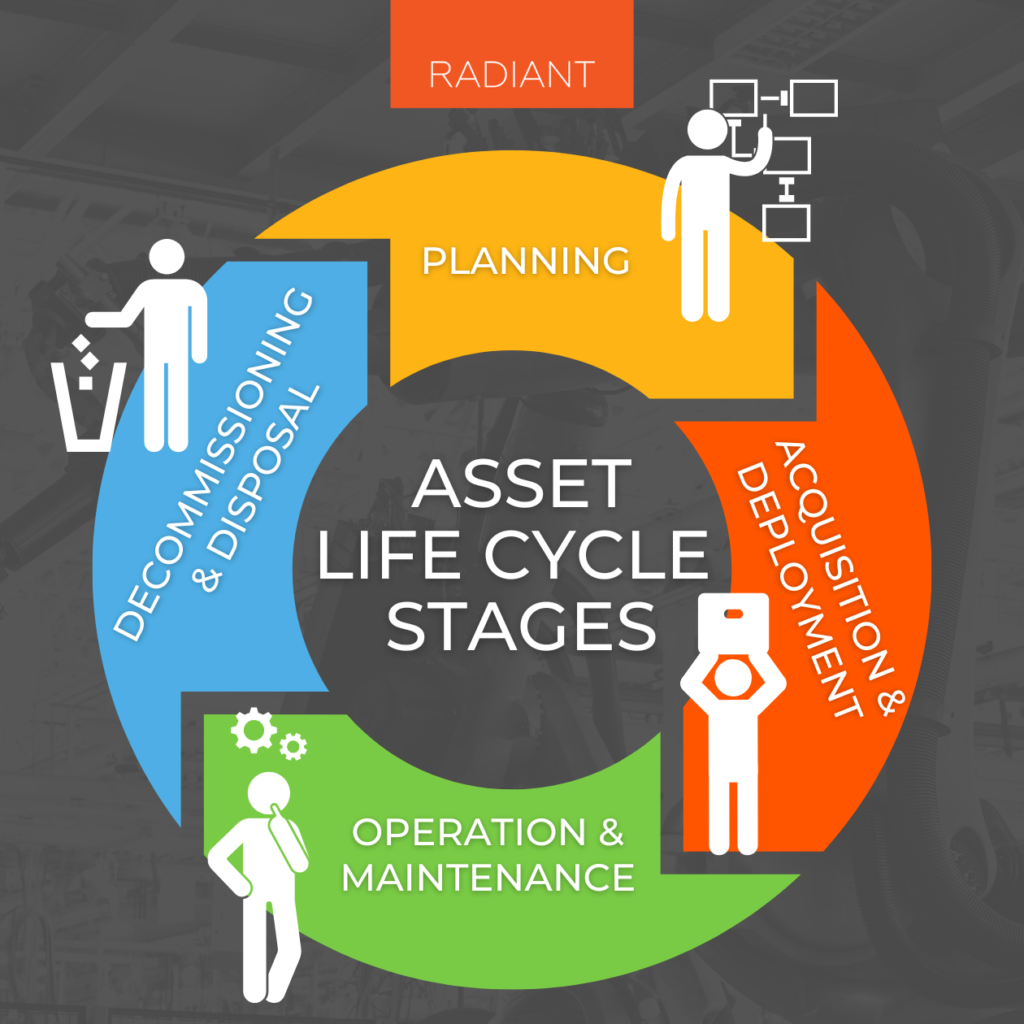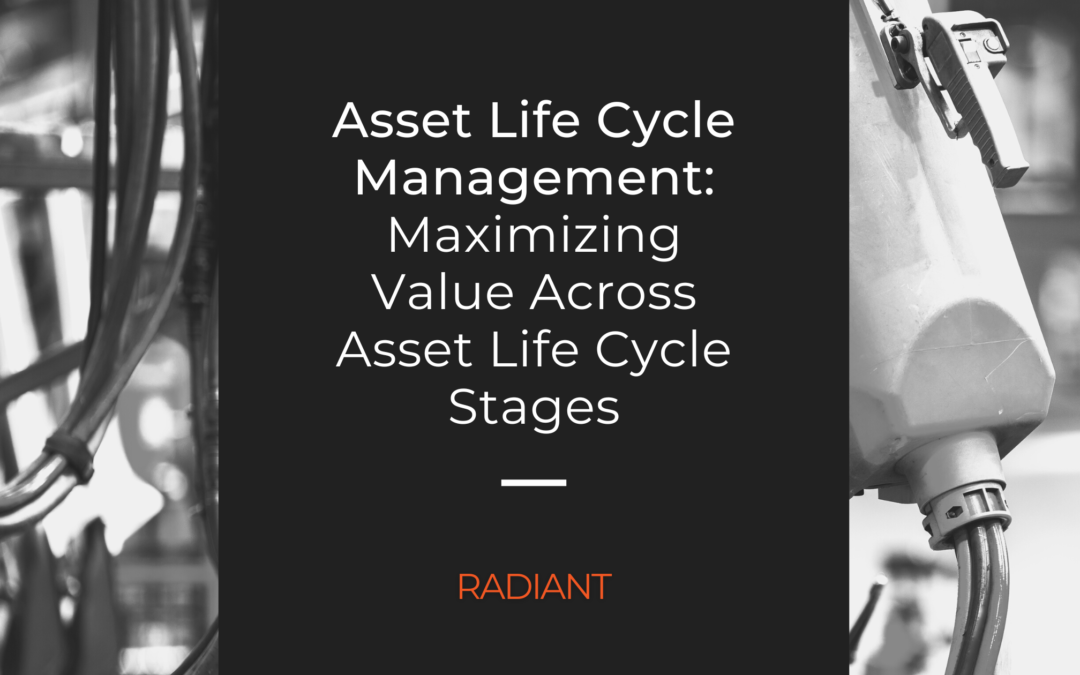When it comes to managing company assets, there’s a lot more to it than simply acquiring them and putting them to use. In order for businesses to get the most out of their fixed assets, they need to be aware of the different stages in an asset’s life cycle and manage them accordingly.
Asset management across an asset’s life cycle stages can be critical to ensuring that resources are used efficiently and that investments are protected. Read on to learn more about why this is so important.
What is Meant by Asset Life Cycle Management?
Asset life cycle management is a strategic process that companies use to manage their physical assets, such as buildings, machinery, vehicles, returnable transport items (RTIs), heavy equipment and tooling. A comprehensive approach, asset life cycle management considers all aspects of an asset’s life cycle stages in order to optimize its performance and return on investment (ROI).
The overall goal of asset life cycle management is to maximize the asset’s value to the organization, in terms of both cost and reliability. However, there are five key objectives of asset life cycle management:
- Acquire the Right Asset: Organizations should only acquire assets that will help them achieve their strategic objectives.
- Optimize Asset Performance: Once an asset is acquired, organizations should work to ensure that it is operated and maintained in a way that maximizes its value.
- Extend Asset Life: Organizations should strive to extend the useful life of their assets whenever possible.
- Dispose of Assets Responsibly: When an asset reaches the end of its useful life, organizations should dispose of it in a way that minimizes environmental and social impacts.
- Continuously Improve: Asset managers should continually review and revise their asset management practices to ensure that they are as efficient and effective as possible.
Asset life cycle management is a key function of asset tracking and is essential for optimizing the performance of an organization’s physical asset portfolio.
Why is Asset Life Cycle Management Important?
Asset life cycle management is important for a number of reasons.
Firstly, it allows organizations to get the most value out of their assets. This is because asset life cycle management ensures that assets are properly maintained and only replaced when necessary.
Secondly, asset life cycle management can help to improve safety and reduce risks. This is because asset life cycle management includes regular inspections and maintenance, which can help to identify potential hazards before they cause any accidents or incidents.
Finally, asset life cycle management can help to improve organizational efficiency and productivity. This is because well-managed assets tend to be more reliable and require less downtime for repairs or replacements.
In summary, asset life cycle management is important for maximizing value, improving safety, and reducing costs. Asset life cycle management is an essential part of any organization’s asset management strategy.
What are the Four Asset Life Cycle Stages?

There are four key stages in asset life cycle management: planning, acquisition and deployment, operation and maintenance, and decommissioning and disposal.
1. Asset Planning: One of the most important aspects of asset life cycle management is the planning stage, when an organization first decides that it needs a new asset. This could be due to a variety of factors, such as an increase in demand for the asset or the asset reaching the end of its useful life.
Once the decision has been made to acquire a new asset, the organization will need to determine what type of asset is best suited for their needs. This will involve considering a number of factors, such as the asset’s cost, its expected lifespan, and its required maintenance schedule.
After the organization has decided on the type of asset it requires, they will then need to develop a plan for acquiring and implementing the asset. This plan will need to take into account a number of factors, such as the asset’s lead time, installation costs, and training requirements.
By taking the time to carefully plan before purchasing an asset, an organization can maximize its chances of achieving its desired results.
2. Acquisition and Deployment of Assets: After an asset has been planned for and its purchase approved, the next stage in its life cycle is acquisition & deployment. This is the process of actually acquiring the asset and putting it into service. Depending on the type of asset, this can involve anything from ordering the asset online to having it delivered and installed.
Once the asset is in place, it needs to be configured and tested to ensure that it meets all the requirements that were set out in the planning stage. Only when everything is up and running smoothly should the asset be put into full operational use. This stage also includes training employees on how to use the asset.
This stage can be complex and time-consuming, but it is essential to ensure that the asset performs as expected.
3. Asset Operation and Maintenance: After an asset has been acquired and deployed, it enters the third stage of its life cycle: operation and maintenance. This is typically the longest phase of an asset’s life cycle, as it involves ongoing care and upkeep to keep the asset in good working condition.
During this stage, asset managers must monitor the asset closely for signs of wear and tear, and perform necessary repairs and proactive maintenance to keep it running smoothly. By being proactive with an asset maintenance strategy, asset managers can minimize downtime and extend the asset’s useful life.
In addition, they may need to make regular adjustments to keep the asset compatible with other systems or to ensure that it meets user needs. In some cases, it may also be necessary to upgrade the asset to keep up with changing needs. By properly maintaining an asset during this stage, asset managers can help to extend its useful life and maximize its value.
4. Decommissioning and Disposal of Assets: The final stage, decommissioning and disposal, is often the most challenging. Once an asset reaches the end of its useful life, it must be decommissioned and disposed of in a safe and responsible manner. The primary challenge in this stage is to minimize environmental impact while maximizing financial return.
There are a number of factors to consider when decommissioning an asset. Firstly, you need to ensure that all data and information associated with the asset is backed up and safe. Secondly, you need to determine how best to dispose of the asset, taking into account factors such as environmental impact and cost. Finally, you need to decommission the asset in accordance with any legal or regulatory requirements that apply.
After an asset has been decommissioned, it is important to properly dispose of it in accordance with environmental regulations in order to avoid contamination and health risks. Proper disposal also helps to prevent valuable materials from being wasted. The asset may also need to be dismantled and recycled, depending on its composition.
Depending on the asset, decommissioning and disposal may be simple or complex. Careful planning is essential to ensure that decommissioning and disposal are conducted safely and efficiently.
How is an Asset’s Life Cycle Effectively Managed?
An asset’s life cycle is most effectively managed using asset management software.
This type of software is important for effective asset life cycle management because it provides a central repository for all asset data, making it easy to track the location, condition, and maintenance history of an asset from cradle to grave. Good asset management software will track an asset from when it is first acquired, throughout its lifespan, and until it is eventually retired or disposed of.
Asset management software will also generate reports on the performance of the asset and flag any issues that need to be addressed. This helps to prevent downtime and save on repair and replacement costs. These reports can also be used to help to identify which assets are under-utilized or not being used at all. Many asset management solutions can also help to automate key asset management processes, such as asset scheduling and preventive maintenance planning.
Additionally, asset management systems can help organizations comply with regulatory requirements related to asset lifecycle management. For example, many jurisdictions require that organizations keep records of their asset purchases, inspections, and repairs. By using asset management software, organizations can ensure that they are able to meet these requirements and avoid penalties.
By using asset management software, organizations can increase visibility and control over their assets, which empowers them to make better-informed decisions that improve asset utilization, reduce downtime, and extend the life of their assets. Ultimately, asset management software is an essential tool for any organization that is looking to optimize its asset life cycle management and improve its decision-making processes.
Get Started with Asset Life Cycle Management
Asset life cycle management is a critical process for any organization, yet it’s often overlooked. By understanding the different stages of an asset’s life and using the right asset management software, you can save time and money while ensuring your assets are always in good condition.
Explore our asset management solution today and reach out to see how we can help you manage your organization’s assets more efficiently.
Last Updated on September 13, 2022 by Radiant

